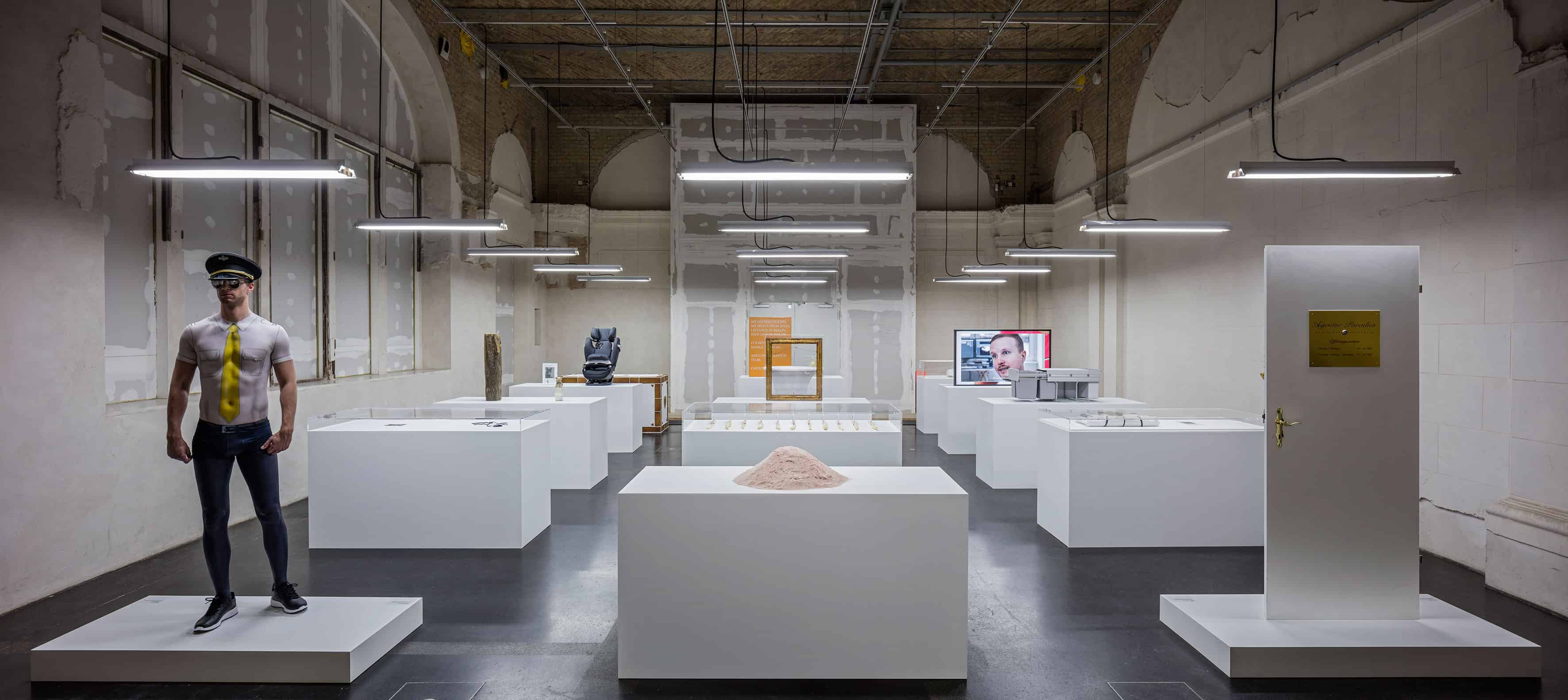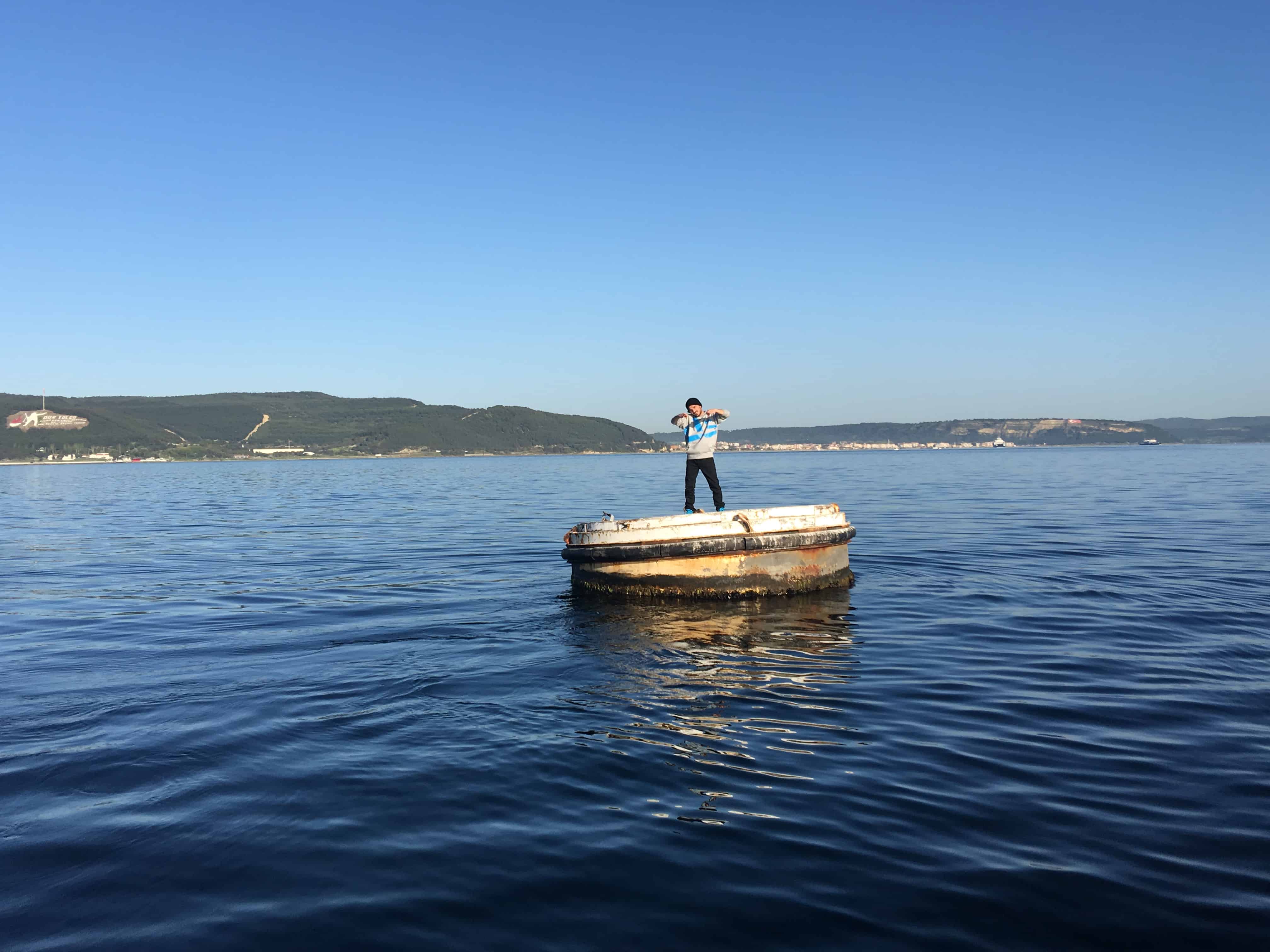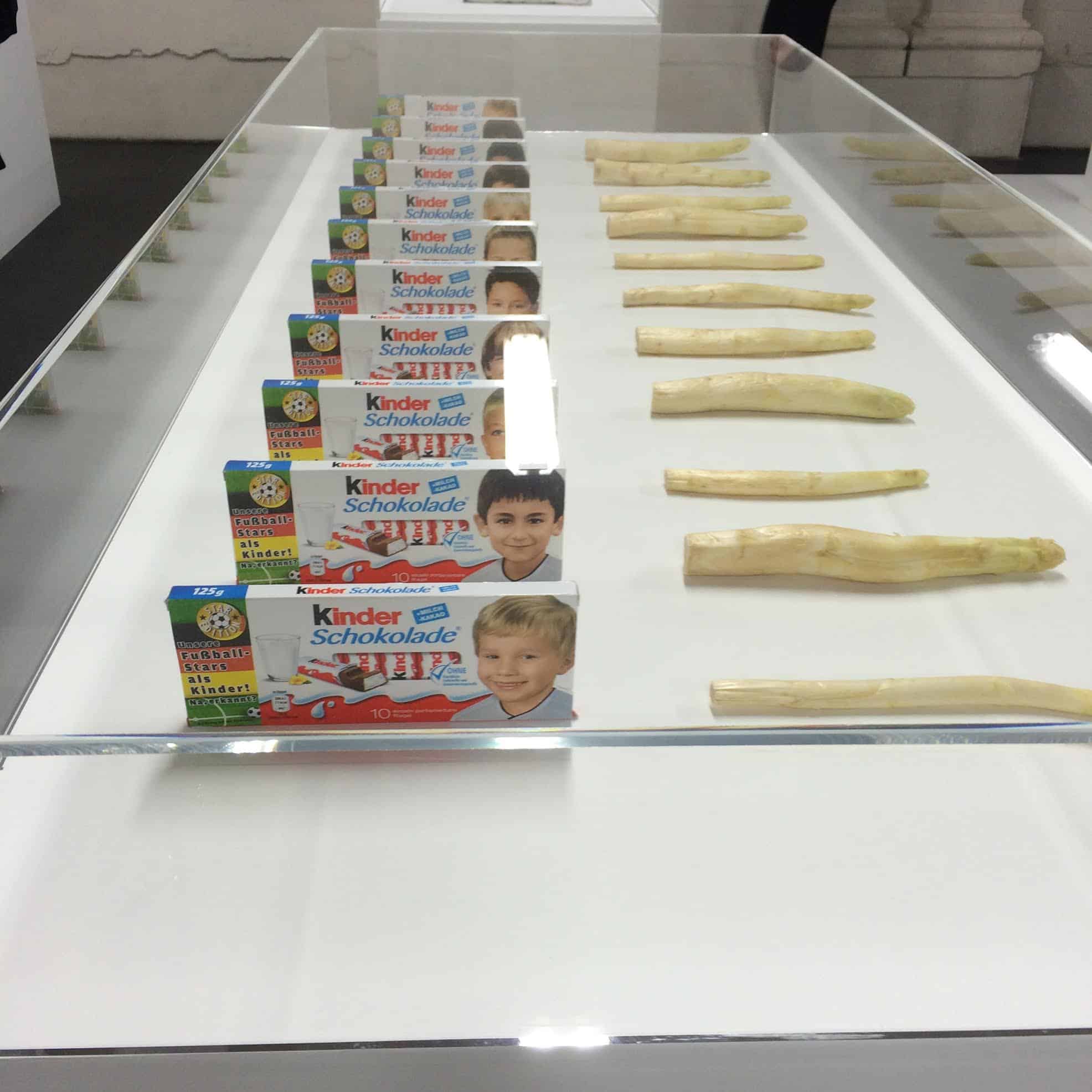In the days running up to the Berlin Biennale, there was a definite feeling of unease in the air. Would DIS, that hipster collective, present us only with visions of a utopia, picked out in every shade of the rainbow? In the end, they present us with a heady mix of what already is and what may yet be, in full spectrum technicolour.
In the Akademie der Künste (AdK), I came to the startling conclusion that this which I saw before me is not really a vision of the future from which I’d have difficulty emerging, but something already of our present reality. In the entry way, I am greeted by very large format light boxes – courtesy of the LIT Collective -, showing people from the cultural margins; pop-culture nerds, and ‘white trash’. Anna Uddenberg presents us with distorted and deformed vision of women; the women range from a slim and healthy businesswoman in office attire, through to selfie-stick wielding celebrities.Simon Fujiwara’s installation Happy Museum tries to capture a German citizen’s joy, while playing on – and with – commonly held stereotypes. Current affairs and politics are presented here too. On a display, we can find asparagus next to the Kinderschokolade. Due to the Euro 2016 Competitions, the little boy in the branding has been replaced with photographs from the childhoods of the current squad of Germany players, most of whom have roots outside of Germany. Close by is a flyer that was found out on the street, advertising a massaging service concentrating on the internal organs. Also displayed is bread in a jar, and Angela Merkel’s high definition make-up. The installation by Fujiwara opens a way for contemporary art to have a real conversation about nationality.

Installation view of “The Happy Museum”, 2016, courtesy Simon Fujiwara, photo: Timo Ohler
There was no lack of reference to fashion also, especially designs not necessarily configured for the average, here, western European Caucasian, as presented by TELFAR. Links were also made (in works by Debora Delmar) to the importing of healthy and organic foods, and how these commodities were evolving into a luxury, reserved for a select clientele.
Waiting for us on the second floor is the excellent video piece, Homeland, by Halila Altindere. This piece is a cross between fiction and documentary, and it describes the experience of a forced emigration from Syria, to a camp at the old airport of Berlin-Tempelhof.

Video still of “Homeland,” 2016, courtesy Halil Altindere; Pilot Gallery, Istanbul
A definite highlight of the Berlin Biennale is a piece by Jon Rafaman which combines art and technology in a virtual reality experience (Caution – only for those with strong nerves). This piece is situated in the roof spaces of the AdK. For the best possible ending of a visit to the AdK, it is worthwhile going to sub-basement level -3, to see Hito Steyerl’s Black Box.

Installation view of “L’Avalée des avalés (The Swallower Swallowed) Rhino/Bear,” 2016, “View of Pariser Platz,” 2016, and “L’Avalée des avalés (The Swallower Swallowed) Iguana/Sloth,” 2016; courtesy Jon Rafman; Future Gallery, Berlin; photo: Kasia Lorenc
Moving on now to the Kunst-Werke Institute of Contemporary Art (KW Inst.), where the primary focus of it’s halls and spaces is video art. All the works are architecturally arranged and displayed, so that the work and the space complement each other. The vision of the future that is presented here, is guided and directed by ideas surrounding mankind’s interactions with anthropomorphised objects (the work of Cécile B. Evans). Weaving it’s way through this is an errant strand about Love; a pseudo-documentary attempting to explore and define romantic love in the realm of online dating. It does leave us with a question: Love has been liberated and is free, but has free love freed us? Likewise, the love of the self, and the cult of the body-beautiful.
Continuing the on-line theme, we encounter the work of Camille Henrot that occupies the whole of the third floor. Here, she inducts us into a fictional conversation with the producers of e-mail advertising campaigns.

Installation view of “Office of Unreplied Emails,” 2016; courtesy Camille Henrot; KÖNIG GALERIE, Berlin; and “11 Animals that Mate 4 Life,” 2016; courtesy Camille Henrot; KÖNIG GALERIE, Berlin, kamel mennour, Paris; photo: Kasia Lorenc
The theme of the works presented at the European School of Management and Technology (ESMT) is that most valuable of today’s resources – personal details, and consumer behaviour data (works by Simon Denny, and Linda Kantchev). The traumatizing vision of mass monitoring and data capture is presented here in three possible scenarios, each with a lesser-or-greater level of negative fallout.

Installation view of “Blockchain Visionaries,” 2016; courtesy Simon Denny; Galerie Buchholz, Cologne/Berlin/New York; photo: Timo Ohler
This time around – and for the first time – the Biennale moved beyond the usual bounds of institutions, and stepped into spaces such as the bunker-space of the Feurle Collection (which contains – amongst others – the works of Turner Prize nominee Josephine Pryde), and onto a Blue Star Lines ship. Here, Korakrit Arunanondchai und Alex Gvojic presented an apocalyptic vision of a world ruled by rats, rendered using Gothic aesthetics.

Installation view from “There’s a word I’m trying to remember, for a feeling I’m about to have (a distracted path toward extinction)”, 2016; Courtesy Korakrit Arunanondchai/Alex Gvojic; C L E A R I N G, New York/Brussels; Carlos/Ishikawa, London; Foto: Timo Ohler
From the point of view of those visiting the German capital, it could well be said that something has shifted. For quite a while now, the Berlin Biennale hasn’t attracted this many collectors to the city. Conversations (and more) move on from those locations already hosting Biennale exhibitions, and into private gallery showrooms.
Truly, the 9th Berlin Biennale did concentrate primarily on young artists of the post-internet age, but contrary to earlier speculation, this didn’t turn into an art-party-happening event. DIS Collective succeeded in achieving balanced proportionality between the commercial aspects of this event, and it’s socio-political narrative. Understand, DIS Collective didn’t set out to discuss our fears; DIS Collective set out to scare us!
words: Kasia Lorenc










